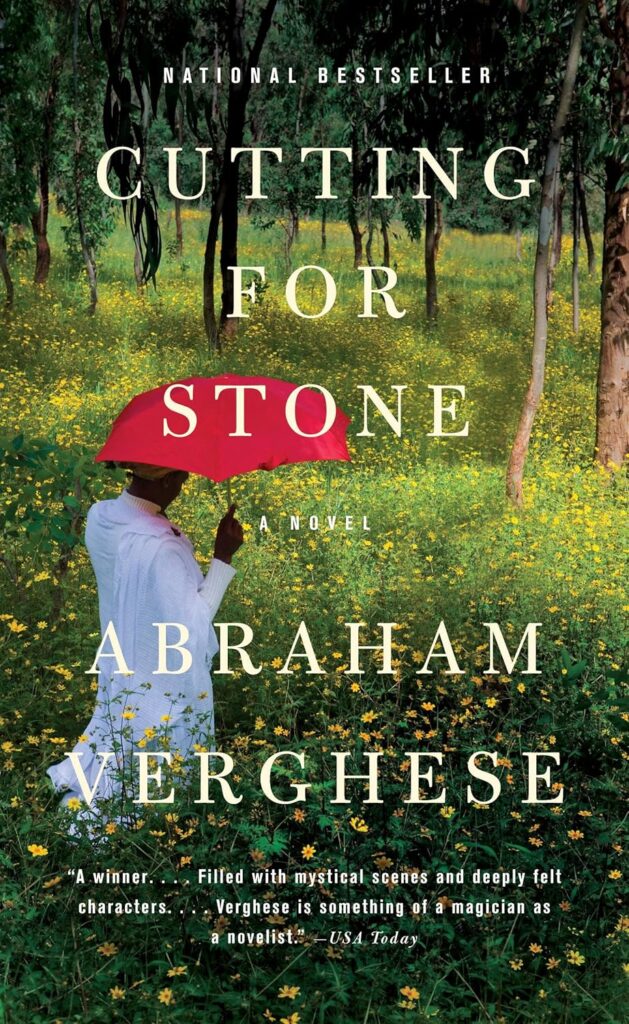Cutting for Stone, a novel by Abraham Verghese is a sweeping family saga that takes place in Ethiopia and the United States beginning in the mid-fifties. The story originates in Addis Ababa, Ethiopia at a mission hospital.
Marion, who tells the story, and his twin brother Shiva are born of a secret union between a Carmelite nun and a British surgeon. Seeing the babies’ mother in distress as she labors to give birth, Thomas Stone, father of the twins, steps in, but it’s too late to save the mother.
Hema, a no-nonsense Indian-trained OB-GYN specialist, just arriving from a visit with her parents in India, takes over the birth of the conjoined babies, performing a cesarean section on the deceased mother. The babies are easily separated after birth and are strong, healthy boys.
The father, overwrought with the death of the woman he loved, rushes from the operating room and disappears, not to be heard from for thirty years.
Hema takes over the caring for the twins and considers them her own sons. She marries a fellow Indian, Ghosh, an Internist who also works at the hospital. Ghosh is a wonderful husband and father, full of wisdom and good humor.
Identical twins, Marion and Shiva are inseparable as little children, but as they enter puberty they become quite different. They have a bitter falling-out, and go their separate ways. They are both brilliant and seek professions in the medical field.
The novel is full of medical phrases, techniques, and references, which I found fascinating. Not that I understood most of it, but I appreciate the knowledge and experience behind it. The author, Abraham Verghese, born in Addis Ababa, Ethiopia, is a physician and teaches at the Stanford University School of Medicine.
Cutting for Stone is a long family saga, but engaging and memorable with deeply-felt characters. I loved hearing about life in Ethiopia, especially regarding health care. When my husband and I served in West Africa with the Peace Corps in The Gambia, I worked at a 22-bed bush hospital as a records keeper/advisor, so providing medical care with very limited resources was familiar to me.
Reading this novel is a commitment, much like his later novel The Covenant of Water. Though long—the paperback is 677 pages—it was definitely worth my time and effort.


